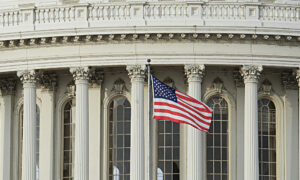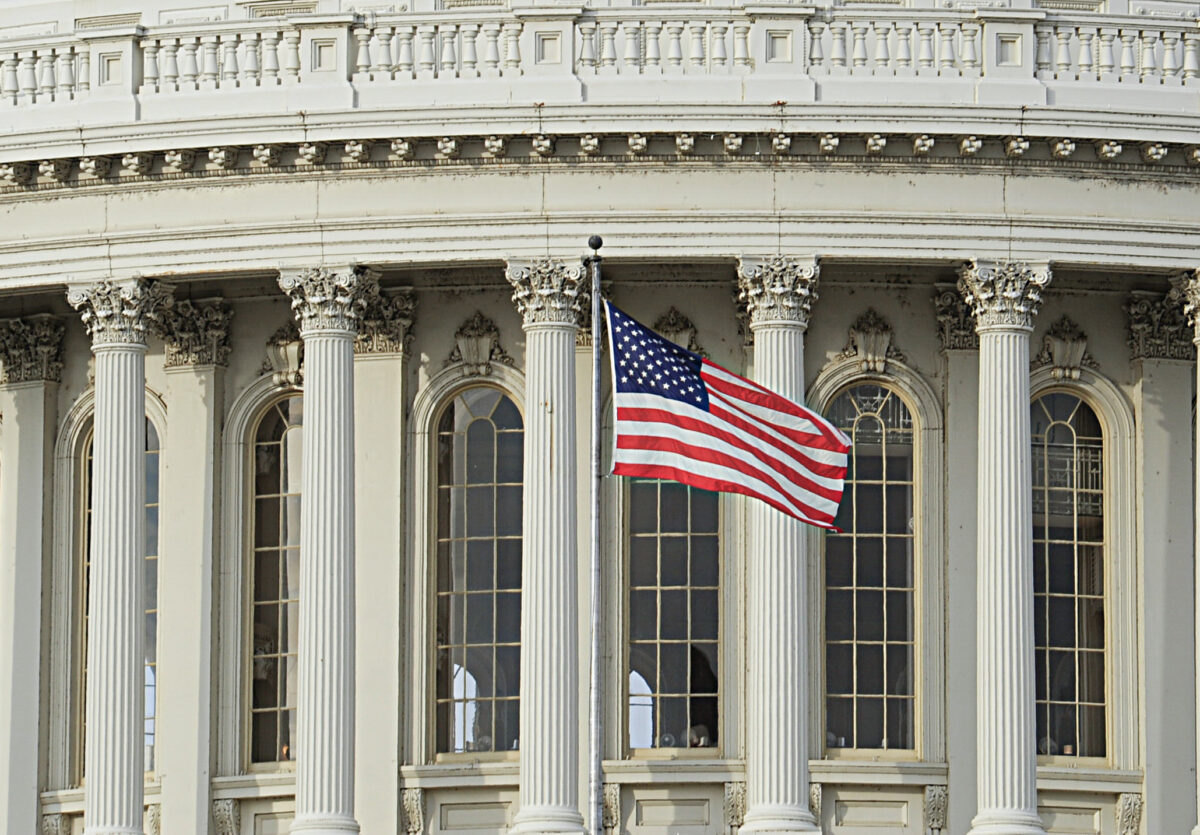The Growing Tyranny of the Whack-a-Mole Regulatory State
Commentary The federal bureaucracies, “the swamp,” the administrative state, the unelected petty tyrants embedded in the executive branch of the federal government—call it what you will. I’ll call it the regulatory state. The regulatory state is on the verge of putting an end to a free and prosperous United States of America. The enormous costs of the regulatory state are both economic and political. Wayne Crews of the Competitive Enterprise Institute performs an annual tabulation of the dollar cost of the regulations imposed on our economy by federal regulation. Exact amounts are elusive due to the sheer immensity of the regulatory state, but he estimates the annual cost to be almost $2 trillion. That’s over $14,600 per American family. A decade ago, the Journal of Economic Growth published a study by economists John Dawson and John Seater showing that the economic burden of federal regulation from 1949 to 2005 retarded economic growth by about 2 percent per year. They calculated that the 2011 GDP of $15.1 trillion would have been $53.9 trillion if federal regulations had remained at their 1949 level. The exact total is highly debatable and impossible to calculate with certainty, but various other studies also have shown that federal regulation has acted as a heavy brake on economic growth. Defenders of the regulatory state would say that all those regulations were worth the cost—that without regulatory bureaucracies, greedy businesses would have run roughshod over the American people. That assessment, however, rests on a fallacy. It assumes that in the absence of regulation, there would be no other safeguards against corporate depredations. That assumption overlooks our primary protection against harmful behavior: the law. The common law protects our rights and provides that infractions against those rights be adjudicated by judges and juries of our peers. The common law approach is far more just than the administrative law approach by which a federal bureaucracy acts as police, judge, and jury and can trample the rights of those it targets with relative impunity. As costly as regulation is economically, it’s even more costly politically. Not only do administrative law apparatuses within bureaucracies supplant the common law, but such regulatory power subverts our constitutionally guaranteed right to a republican form of government—a government where the laws to which we are subject are enacted by duly elected representatives. Contrary to that republican model, today in a typical year the unelected bureaucrats in the executive branch promulgate at least 10 times as many of the rules we must obey as our elected representatives in Congress pass. (Last year’s totals were: 247 laws passed by Congress and 3,168 rules posted in the Federal Register.) That point was driven home to me pictorially about a decade ago when a congressman published a photo of a cabinet containing the previous year’s regulations as printed in the Federal Register. They were piled up in three stacks while the laws that Congress passed during the same year are almost unnoticeable as they sit on top of the cabinet on the right side. (It should be noted that in addition to the rules printed in the Federal Register, the bureaucracies issue thousands of additional documents—things like statements of policy and interpretation of rules—that they send to those they regulate, but aren’t entered into the Register.) I first used the whack-a-mole description for our ever-expanding regulatory state during the Obama presidency when the former president encouraged federal agencies to not bother waiting for Congress to pass laws, but to regulate aggressively. Blogging for Forbes.com at the time, I wrote about regulatory shenanigans at the Bureau of Land Management, Federal Communications Commission, National Labor Relations Board, and what I consider the most rogue bureaucracy of all, the Environmental Protection Agency (EPA). After a four-year respite from runaway regulation during the Trump presidency, the drive toward hyper-regulation has been resumed with gusto by the current president. In the last two-plus years, some of the more aggressive regulators have been the Securities Exchange Commission (trying to impose Environmental, Social, Governance requirements on corporations) and Federal Trade Commission (biased against big businesses). The whack-a-mole analogy is valid in two ways. One is that while Congress or the Supreme Court may block, annul, or repudiate a specific bureaucratic rule or edict on the grounds that it lacks legislative authority or constitutional legitimacy, at the very same time other bureaucracies are devising and imposing their own dubious regulations. The sheer volume of regulations is so great that it’s virtually impossible for Congress and the Supreme Court to address any more than a small percentage of them. The other type of whack-a-mole phenomenon is when the same agency that has one regulation overruled by t


Commentary
The federal bureaucracies, “the swamp,” the administrative state, the unelected petty tyrants embedded in the executive branch of the federal government—call it what you will. I’ll call it the regulatory state. The regulatory state is on the verge of putting an end to a free and prosperous United States of America. The enormous costs of the regulatory state are both economic and political.
Wayne Crews of the Competitive Enterprise Institute performs an annual tabulation of the dollar cost of the regulations imposed on our economy by federal regulation. Exact amounts are elusive due to the sheer immensity of the regulatory state, but he estimates the annual cost to be almost $2 trillion. That’s over $14,600 per American family.
A decade ago, the Journal of Economic Growth published a study by economists John Dawson and John Seater showing that the economic burden of federal regulation from 1949 to 2005 retarded economic growth by about 2 percent per year. They calculated that the 2011 GDP of $15.1 trillion would have been $53.9 trillion if federal regulations had remained at their 1949 level. The exact total is highly debatable and impossible to calculate with certainty, but various other studies also have shown that federal regulation has acted as a heavy brake on economic growth.
Defenders of the regulatory state would say that all those regulations were worth the cost—that without regulatory bureaucracies, greedy businesses would have run roughshod over the American people. That assessment, however, rests on a fallacy. It assumes that in the absence of regulation, there would be no other safeguards against corporate depredations. That assumption overlooks our primary protection against harmful behavior: the law. The common law protects our rights and provides that infractions against those rights be adjudicated by judges and juries of our peers. The common law approach is far more just than the administrative law approach by which a federal bureaucracy acts as police, judge, and jury and can trample the rights of those it targets with relative impunity.
As costly as regulation is economically, it’s even more costly politically. Not only do administrative law apparatuses within bureaucracies supplant the common law, but such regulatory power subverts our constitutionally guaranteed right to a republican form of government—a government where the laws to which we are subject are enacted by duly elected representatives.
Contrary to that republican model, today in a typical year the unelected bureaucrats in the executive branch promulgate at least 10 times as many of the rules we must obey as our elected representatives in Congress pass. (Last year’s totals were: 247 laws passed by Congress and 3,168 rules posted in the Federal Register.)
That point was driven home to me pictorially about a decade ago when a congressman published a photo of a cabinet containing the previous year’s regulations as printed in the Federal Register. They were piled up in three stacks while the laws that Congress passed during the same year are almost unnoticeable as they sit on top of the cabinet on the right side. (It should be noted that in addition to the rules printed in the Federal Register, the bureaucracies issue thousands of additional documents—things like statements of policy and interpretation of rules—that they send to those they regulate, but aren’t entered into the Register.)
I first used the whack-a-mole description for our ever-expanding regulatory state during the Obama presidency when the former president encouraged federal agencies to not bother waiting for Congress to pass laws, but to regulate aggressively. Blogging for Forbes.com at the time, I wrote about regulatory shenanigans at the Bureau of Land Management, Federal Communications Commission, National Labor Relations Board, and what I consider the most rogue bureaucracy of all, the Environmental Protection Agency (EPA). After a four-year respite from runaway regulation during the Trump presidency, the drive toward hyper-regulation has been resumed with gusto by the current president. In the last two-plus years, some of the more aggressive regulators have been the Securities Exchange Commission (trying to impose Environmental, Social, Governance requirements on corporations) and Federal Trade Commission (biased against big businesses).
The whack-a-mole analogy is valid in two ways.
One is that while Congress or the Supreme Court may block, annul, or repudiate a specific bureaucratic rule or edict on the grounds that it lacks legislative authority or constitutional legitimacy, at the very same time other bureaucracies are devising and imposing their own dubious regulations. The sheer volume of regulations is so great that it’s virtually impossible for Congress and the Supreme Court to address any more than a small percentage of them.
The other type of whack-a-mole phenomenon is when the same agency that has one regulation overruled by the Supreme Court for exceeding its legislative authority blithely continues to issue other regulations that likewise exceed the bureaucracy’s authority. The regulators smugly know that it could take a long time for challenges to the new regulations to reach the Supreme Court—if, in fact, it ever does.
Here’s a recent example: In 2022, in West Virginia v. EPA, the Supreme Court rightly overturned regulatory mandates issued by the EPA to control what fuels our electricity utilities use. The Court ruled that EPA was arrogating power that Congress had not conferred upon it. Yet here we are, not even a year later, and the EPA has announced new Corporate Average Fuel Economy mileage standards designed to force auto manufacturers to build and car buyers to purchase electric vehicles instead of gasoline-powered vehicles.
President Joe Biden is completely on the side of federal regulators. Not only is he in favor of greatly increasing the number of bureaucrats (87,000 for the IRS alone), but he wants to reward them monetarily. According to OpenTheBooks.com, there have been as many as a million secret bonuses given to federal employees, and 350,000 employees who received over $30 billion in compensation in 2018 had their names redacted. Federal pensions are classified as private information not subject to Freedom of Information Act petitions. In other words, we the people pay those pensions but aren’t allowed to know how much individual retirees receive. So much for transparency.
Speaking of transparency, earlier this month the president signed an executive order that would, according to the Competitive Enterprise Institute, (1) redefine “significant regulatory actions” subject to congressional review as those that would cost more than $200 million instead of the present threshold of $100 million; (2) make it easier for regulations to avoid cost-benefit scrutiny; and (3) alter cost-benefit analyses to be able to count costs as benefits.
Biden’s gigantic regulatory push shows that he wants to rule by executive fiat, and that he intends to bypass and neuter Congress and the Supreme Court, effectively deep-sixing the constitutional balance of power. As I wrote in this space earlier, bureaucratism, the first cousin of socialism, is the indispensable mechanism of tyranny. The whack-a-mole regulatory state needs to be seen in that light.
Views expressed in this article are the opinions of the author and do not necessarily reflect the views of The Epoch Times.







